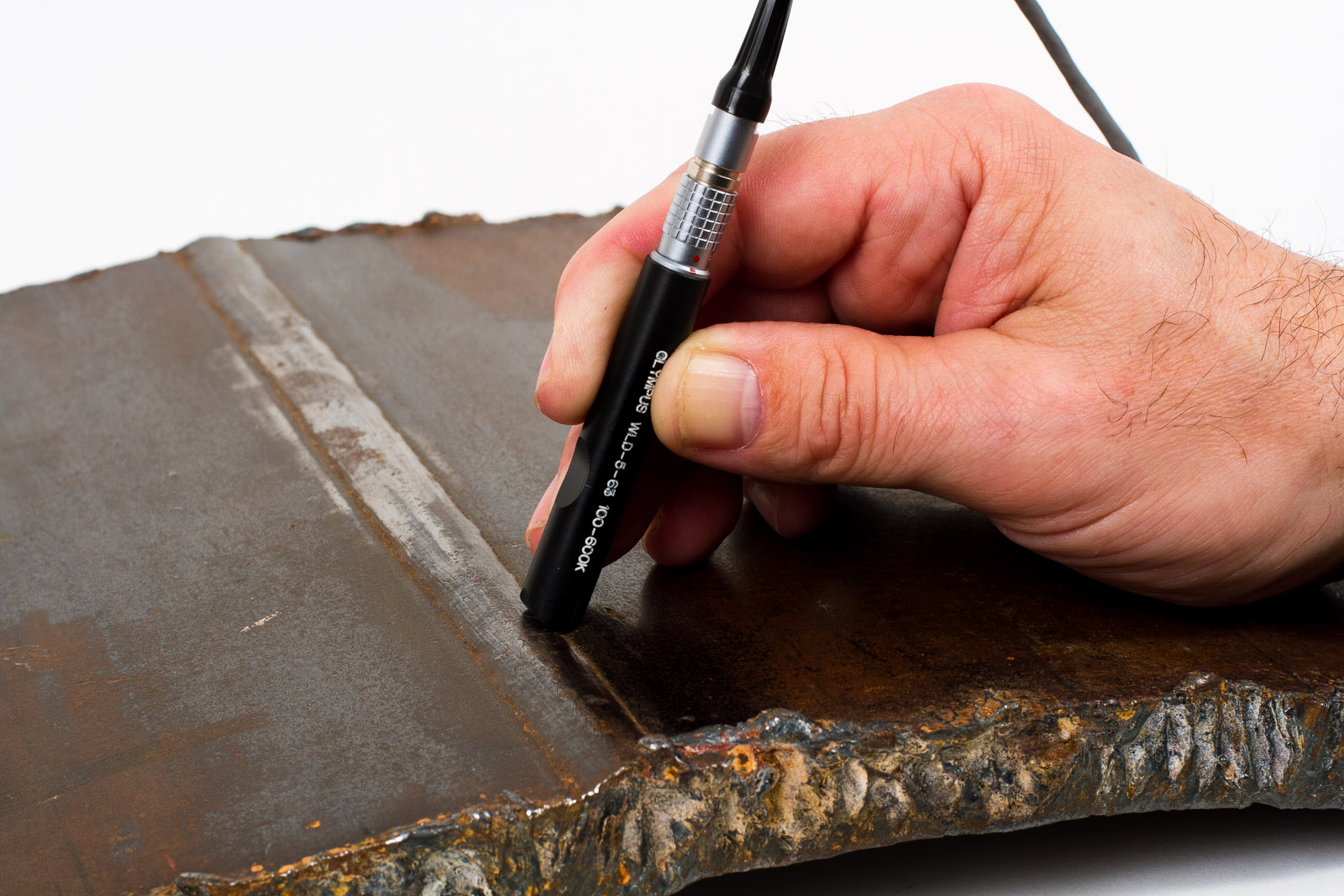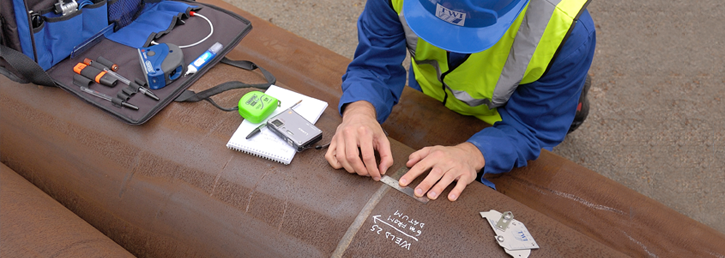Locating the Right Provider for Welding Inspection Madison: Trick Considerations
Locating the Right Provider for Welding Inspection Madison: Trick Considerations
Blog Article
Exactly How Effective Welding Assessment Boosts Architectural Integrity and Durability
In the world of building and design, the value of welding assessment can not be overstated, as it plays a critical duty in making certain architectural stability and extending the lifespan of jobs. Sign up with the exploration of how efficient welding examinations can change possible susceptabilities right into toughness, contributing to the long-lasting success of building and constructions.
Value of Welding Assessment
Making certain the structural integrity and security of bonded building and constructions mandates strenuous welding inspection procedures. Welding assessment works as an important guard in the construction and manufacturing industries, where the stamina and toughness of joints dramatically affect the overall efficiency of structures. This assessment guarantees that welds meet details standards and requirements, decreasing the risks related to structural failings. The repercussions of insufficient welds can be devastating, causing pricey repair services, operational downtimes, or perhaps devastating failures, all of which highlight the extremely important value of complete evaluation.
In enhancement to security, welding inspection plays an important function in quality guarantee. Market standards and codes, such as those from the American Welding Culture (AWS) or the International Organization for Standardization (ISO), demand adherence to stringent guidelines, highlighting the importance of examinations in meeting these legal and professional obligations.
Secret Evaluation Techniques

Ultrasonic Examining (UT) utilizes high-frequency sound waves to identify subsurface defects, providing exact details about weld integrity without creating any kind of damages. Radiographic Evaluating (RT), entailing X-rays or gamma rays, gives an in-depth image of the weld's inner structure, revealing surprise blemishes. Magnetic Bit Checking (MPT) is one more non-destructive method, specifically reliable for discovering surface and near-surface discontinuities in ferromagnetic products.
Penetrant Screening (PT) includes the application of a fluid dye to reveal surface-breaking flaws, offering a simple and affordable solution for non-porous products. Each method has its specific applications, strengths, and constraints, and typically a combination of methods is utilized to achieve comprehensive assessment outcomes. Proficiency of these methods enhances the reliability and sturdiness of bonded structures, aligning with safety and security and efficiency assumptions.
Identifying Common Problems

Porosity, characterized by gas pockets within the weld, decreases the weld's strength and resilience. Cracks, which can happen throughout or after welding, pose substantial risks due to their possible to propagate under tension.
Incomplete blend, where the weld steel falls short to bond completely with the base material, threatens the architectural honesty, leading to weak joints. This flaw commonly stems from inadequate warmth input or improper welding method. Slag additions happen when non-metallic products are entraped in the weld, compromising its toughness and high quality. These are often an outcome of poor cleaning between weld passes or improper flux use.
Identifying these flaws with careful evaluation methods, such as visual evaluation, ultrasonic testing, or radiography, is vital. Dealing with these issues makes certain weld high quality, ultimately supporting the architectural integrity and safety and security of the developed environment.

Enhancing Structural Performance
Comprehending the value of recognizing usual weld defects normally causes checking out approaches for boosting structural performance. The fundamental approach for improving efficiency entails utilizing advanced welding methods and materials that mitigate flaw occurrence. Making use of top notch filler products and making sure correct heat control can substantially reduce concerns such as porosity and fracturing, therefore improving the weld's integrity.
Integrating cutting edge welding technologies, such as laser welding and rubbing stir welding, further magnifies architectural resilience. These methods offer remarkable precision and lowered thermal distortion, straight impacting the sturdiness and stamina of the bonded structures. Furthermore, adopting automated welding systems can make certain repeatable and constant weld high quality, minimizing human error.
Additionally, executing strenuous pre-weld and post-weld procedures is crucial. Correct joint style, surface preparation, and stress-relieving processes add to ideal weld efficiency. Performing complete pre-weld inspections enables very early detection of possible concerns, assisting in timely modifications before they compromise the framework.
Long-lasting Advantages of Inspection

With vigilant evaluation techniques, the lasting advantages to structural stability come to be increasingly apparent. Constant and detailed welding evaluations play a critical function in stopping architectural failures anonymous by recognizing variances and defects early in the building procedure. This positive approach makes certain that prospective problems are attended to before they can jeopardize the safety and security and longevity of structures. By capturing defects early, costly repairs and downtime are lessened, ultimately expanding the life-span of the infrastructure.
Additionally, normal inspections contribute to keeping compliance with market criteria and policies, thereby staying clear of monetary and legal repercussions. This adherence to quality control not only enhances the reliability of find out the framework however also fosters count on amongst stakeholders, including customers, designers, and regulatory bodies. The comprehensive documents of evaluation outcomes acts as a valuable source for future maintenance and repair service efforts, promoting notified decision-making.
Additionally, effective inspection techniques sustain innovation by incorporating innovative modern technologies such as non-destructive screening and electronic imaging, which can enhance accuracy and performance. This technological integration further emphasizes the dedication to excellence in architectural stability. Ultimately, buying precise welding inspections is a sensible approach that produces significant long-term benefits, securing both the financial and physical financial investment in infrastructure tasks.
Verdict
Effective welding assessment plays an essential duty in improving structural integrity and long life by identifying flaws early in the building and construction procedure. Utilizing techniques such as aesthetic inspection, ultrasonic screening, and radiographic testing makes sure the detection of issues like fractures and porosity that endanger weld strength. Extensive examinations guarantee conformity with sector standards, consequently lengthening you can try here the lifespan of structures, lessening pricey repair work, and promoting stakeholder trust fund in the reliability and security of bonded building and constructions.
In the realm of construction and engineering, the value of welding examination can not be overstated, as it plays a critical function in making certain architectural integrity and prolonging the life expectancy of jobs.Making certain the structural integrity and safety of welded building and constructions mandates extensive welding assessment procedures.Structure upon the relevance of welding examination in guarding architectural honesty, recognizing the crucial assessment strategies ends up being imperative for effective execution. Reliable welding examination incorporates a variety of techniques developed to examine weld high quality, guaranteeing compliance with rigorous design criteria - Welding Inspection Madison.Efficient welding evaluation plays a vital role in boosting architectural stability and longevity by recognizing issues early in the building process
Report this page